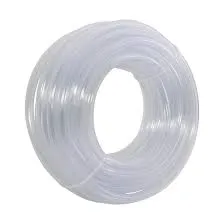Sep . 10, 2024 17:39 Back to list
cutting hdpe sheets
Understanding Cutting HDPE Sheets A Comprehensive Guide
High-Density Polyethylene (HDPE) sheets are known for their versatility and durability, making them a popular material in various industries, from construction to packaging. One of the critical aspects of working with HDPE is the cutting process. Understanding how to cut HDPE sheets effectively is essential for ensuring precise dimensions and maintaining the integrity of the material.
Why Choose HDPE Sheets?
Before delving into cutting techniques, it’s important to recognize why HDPE is favored. HDPE sheets are resistant to chemicals, moisture, and UV radiation, making them suitable for outdoor applications and environments where exposure to harsh substances is common. They are lightweight yet strong, offering excellent impact resistance. Common applications include signage, industrial piping, and even furniture.
Tools for Cutting HDPE Sheets
When it comes to cutting HDPE sheets, the right tools can make all the difference. Here are some commonly used tools
1. Table Saw Ideal for making straight cuts, a table saw equipped with a fine-toothed blade works well for thicker HDPE sheets. 2. Circular Saw A circular saw is perfect for cutting larger sheets or making angled cuts. Using a blade designed for plastics can help reduce chipping.
3. Jigsaw For intricate designs or curves, a jigsaw with a fine tooth blade is the best choice.
4. Utility Knife For very thin sheets, a utility knife can be used for scoring, providing a clean edge without the need for power tools.
cutting hdpe sheets

5. Router For finishing edges or creating grooves, a router is highly effective.
Cutting Techniques
Regardless of the tool you choose, there are some basic techniques to follow
1. Measure Twice, Cut Once Accurate measurements are crucial. Always double-check your dimensions before cutting.
2. Secure the Material Ensure that the HDPE sheet is securely clamped down to prevent movement during cutting, which can lead to inaccurate cuts.
3. Speed and Pressure When using power tools, maintain a steady speed and apply consistent pressure. Too much pressure can cause the material to melt, while too little may create uneven cuts.
4. Safety Precautions Always wear appropriate safety gear, including goggles and gloves. Polyethylene can create small, sharp shavings when cut.
Conclusion
Cutting HDPE sheets doesn’t have to be a daunting task. With the right tools and techniques, anyone can achieve clean, precise cuts suitable for a variety of applications. Whether you are crafting a project, building furniture, or working on industrial solutions, understanding how to cut HDPE effectively will enhance your ability to work with this valuable material. Remember, practice makes perfect, so take your time to familiarize yourself with the tools and processes involved. With patience and care, you can unlock the full potential of HDPE sheets in your projects.
-
High-Quality HDPE Sheet | Durable Plastic Panels
NewsAug.06,2025
-
High-Precision PVC Rigid Sheets for Vacuum Forming | AI-Optimized
NewsAug.05,2025
-
Durable PVC-M Water Supply Pipes | 60-Year Life
NewsAug.04,2025
-
Premium HDPE Water Supply Pipes: Durable & Leak-Proof
NewsAug.03,2025
-
Premium PVC-M Water Supply Pipe - Durable & Efficient
NewsAug.02,2025
-
HDPE Drainage & Irrigation Pipe - Durable, Efficient Solutions
NewsAug.01,2025

